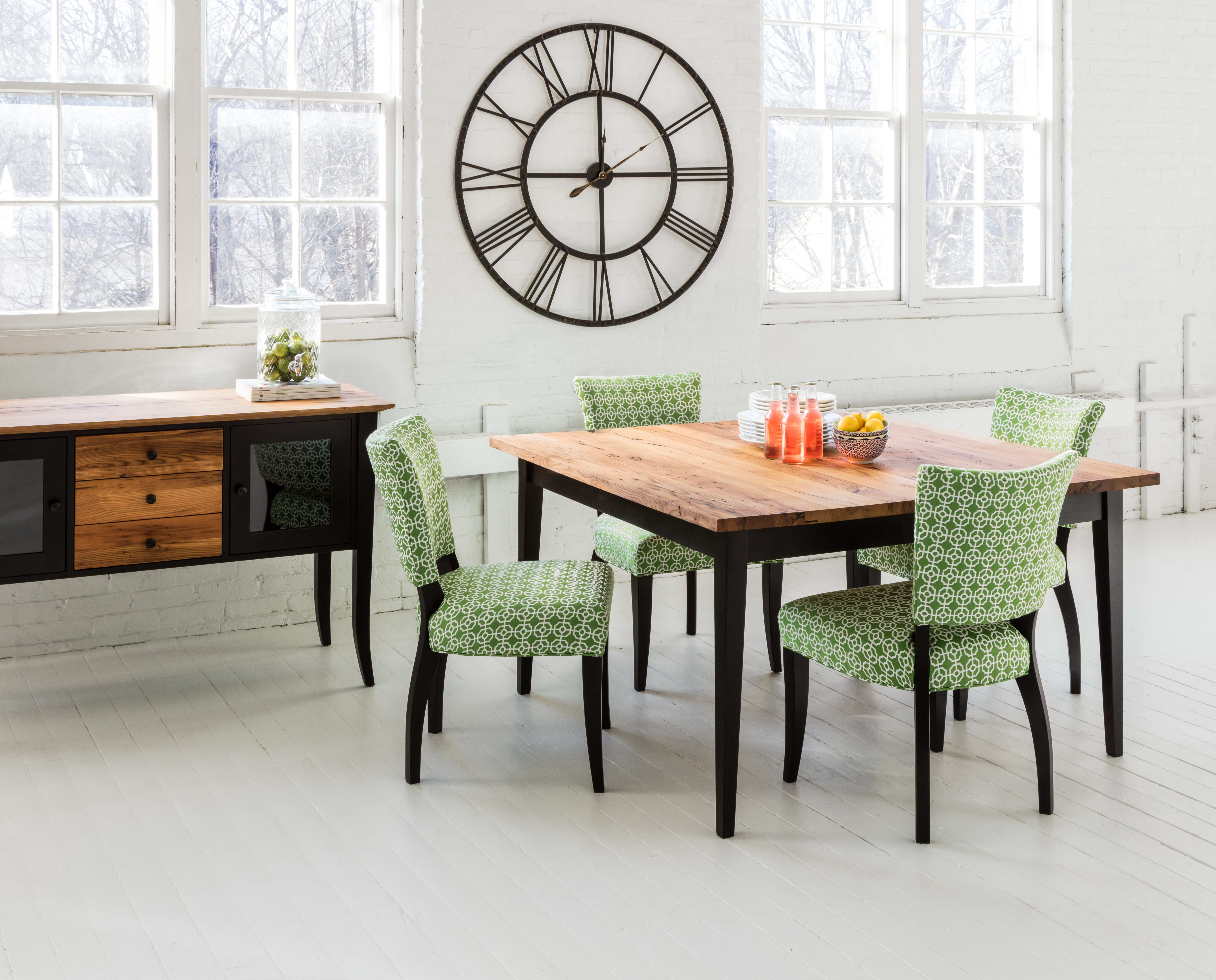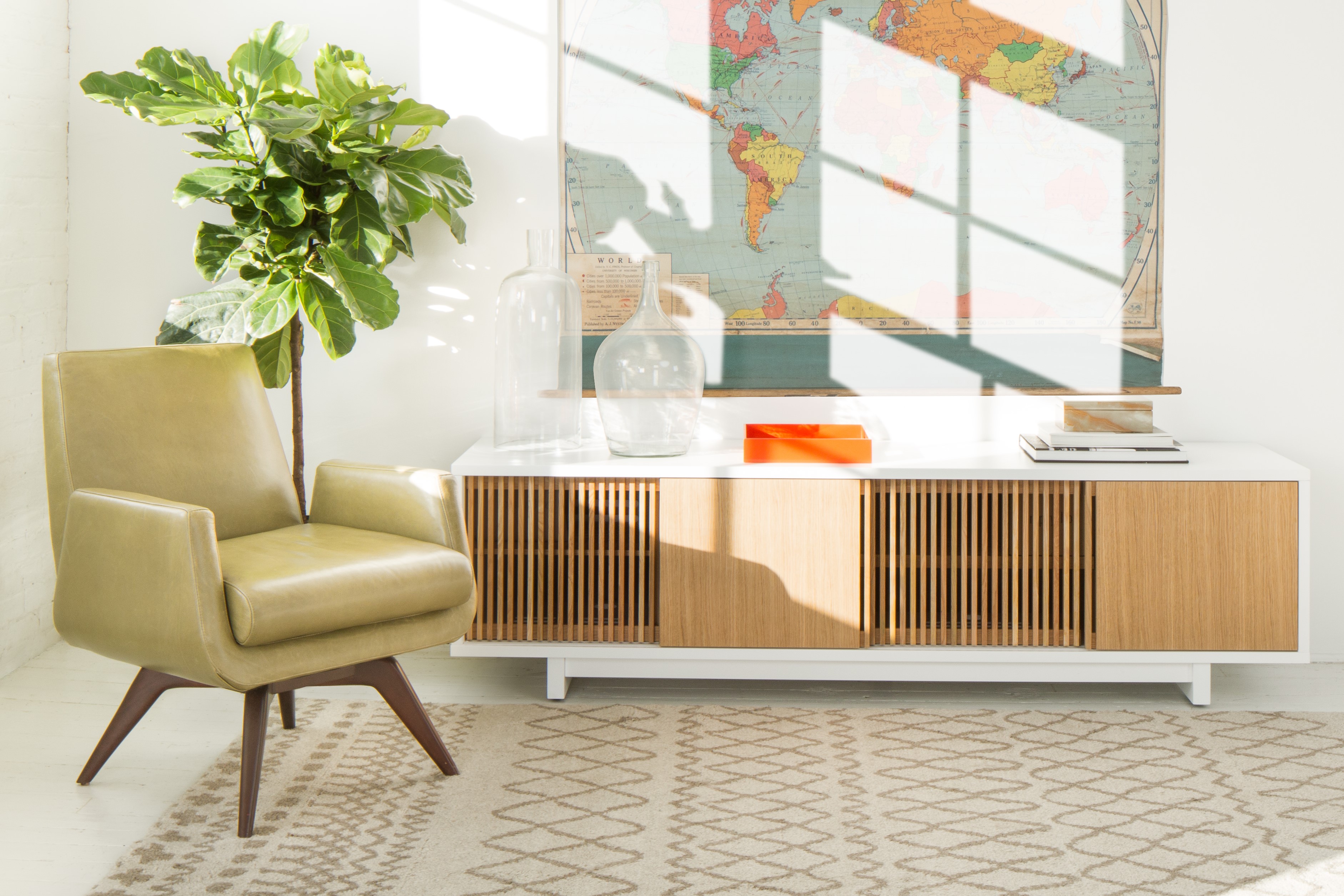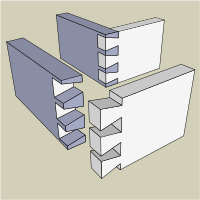15
Oct 2017
If you've ever bought furniture, chatted with someone who has purchased furniture, or even looked into purchasing furniture, we can bet you've asked yourself, "why is wood furniture so expensive?"
Here at Circle Furniture, we have over 60 years' experience seeking the best wood furniture for our customers to provide lasting value.
Before we get started, though, we thought we'd note something important: when you ask why furniture is so expensive, what you're really asking is something else, something more like, "why is high-quality wood furniture so expensive?"

What even is high-quality wood furniture? It's no secret that you can find inexpensive "wood" furniture more readily now than ever before. It may look good, it may feel good, it may even come from a store with a neat aesthetic. Ultimately, though, we have reason to believe that inexpensive furniture isn't going to last, and that means you may end up paying more in the long run.
So, what makes wood furniture so expensive? Read on plus watch Catherine Willey, Framingham Store Manager, go into detail in this three-minute video:
What are the three main types of "wood" used in furniture?
There are, essentially, three types of "wood" used in furniture: Solid wood, particleboard or MDF, and plywood.
Within these categories, there are high quality and lower quality versions which ultimately will affect the long-term durability of the furniture and the price.
Solid wood is a natural resource that we come by organically rather than through a manufacturing process. Solid wood can be either hardwood or softwood. No surprise, hardwoods are stronger and have a higher density than softwoods.
Typical hardwoods found in high-quality wood furniture are:
-
- Oak
-
- Cherry
-
- Maple
-
- Walnut
-
- Birch
-
- Ash
Typical softwoods are:
-
Pine
-
Poplar
-
Acacia
-
Rubberwood
Hardwoods grow at a slower rate and are more fire resistant than softwoods, making them more scarce to harvest and more desirable for high-quality goods. Circle Furniture sources hardwood dining tables, coffee tables, case goods (the frames and drawer fronts), beds and media cabinets.
Softwoods are in some pine drawer boxes which can help to make the cost more attainable.
Another factor in the price of hardwood comes from the fact we are only using the best parts of the tree - the heartwood - the central core of the tree where the rich color tones and core strength come from.
Within these hardwoods, there are tiers of price as well. Walnut is more expensive as it is a bit rarer due to natural limitations such as size.
Ash, Maple, and Cherry are more abundant as they grow larger but have highly sought after aesthetics in the grain which make them less expensive than Walnut but more expensive than some hardwoods. Birch is slightly cheaper than all of these because the natural tones in the wood grain are not as even. Birch is excellent to use for stained or colorfully painted furniture.

Particleboard and Medium Density Fiberboard
Particleboard and Medium Density Fiberboard (MDF) are both engineered wood composites made up of leftover hardwood or softwood. MDF can be quite dense and sturdy, so reliable that it is near impossible to cut with a table saw.
Particleboard, or chipboard, however, is much less sturdy as it is made up of large chips of wood that are bound together with glue and resin (think wood salami).
Although particle board is less expensive, we recommend consumers steer clear. The voids of space in between wood chips in particle board make it far less durable and more prone to damage.
That does not mean all engineered wood composites are cheap, MDF puts its strength to good use in certain applications. So what are some of the uses for MDF? You can find it in some media cabinets, for example, because it will not warp with the heat coming off electronics.
Most bookcase shelves are MDF as it can hold more weight and prevents it from warping over time. Most dressers have MDF on the siding to help mitigate cost and weight and ensure the stability of the piece over time.

Simply put, engineered wood (plywood) is made up of layers of wood, which are glued together in alternating sections.
Plywood can come in both hard and soft wood versions, which affect its durability. Additionally, plywood can come in different numbers of layers (called "ply's"), usually averaging between 3 and 9. The more layers, the stronger the plywood and the higher the cost.
The best quality plywood comes from kiln-dried hardwood layers, which makes it hold its shape and prevent warping. The benefit to plywood is that it can be shaped and curved for specific usages like the base of a Stressless Chair. The base of a Stressless chair contains 32 plys of kiln-dried wood!
What are Veneers?
Another term you will hear tossed around in the furniture world is "veneer." So, what is a veneer?
While there are different quality levels of a veneer, it is a less expensive alternative to hardwood by putting a thin piece of premium wood covering over a type of manufactured wood.
The single layer provides the look of hardwood grains, but the underlying content keeps the cost down. One of the drawbacks to veneer is that it limits the number of times you can refinish your furniture. We would not recommend veneer on tables for that exact reason.
Tables may see some wear over their lifetime, and one of the benefits of a solid wood piece is the flexibility to sand and refinish to increase longevity. A word of caution to all - not all veneers are created equal.
Make sure, if you are getting a veneer, it is an actual piece of hardwood. Additionally, a cheap veneer is the easiest way to make particle board or chipboard look like real wood. If you have a lower quality particle board underneath your veneer, you are more likely to see wear and tear. A dent or chip the veneer it is not easily repairable.
Here is a brief explainer video from Catherine Willey, Framingham Store Manager, on the difference between wood and veneer:
How it is made matters just as much as what!
Repeat after me: joint construction is better than staples, nails, or glue. Joint construction is more labor-intensive and costly than the other options, but there's a reason it is still the go-to method of craftsman today: it's reliable, simple, and secure. Dowels and screws are fine, but dovetail or mortise-and-tenon joints are best.

Drawer construction may impact the price as well. Wood can swell with humidity, so when it comes to wood-on-wood drawers, expect them to stick on the first rainy day. Stickiness is easy to mitigate with a touch of soap or wax.
If you prefer another drawer configuration - plenty of designs come with metal drawer glides as well.
Again, the extra step of measuring metal rails and installing them may result in a more expensive (but worthwhile) piece. That sophisticated soft close feature - as you see on newer kitchen cabinets and drawers - is now available in many drawers as well. Another benefit of a metal glide is that it provides the full extension to see all the way to the back of the drawer, whereas wood on wood glide systems would always leave a bit of drawer inside the case.
As with all finely made products, the devil is in the details. While all the hardwood furniture at Circle Furniture comes from the highest quality and locally sourced species - some put more care and attention into the finer details. Some of these special touches which impact cost include:
-
Using a human set of eyes to carefully match wood grains for drawer fronts or a table top
-
Hand oiling a finished piece to give hardwood furniture its most natural sheen and texture
-
Creating proprietary finishes or hand waxing the inside of drawers to reduce VOCs and our carbon footprint
Wood Furniture Designs
For good or for worse, the most important design icons of our time didn't work with cost (or mass-production) in mind. They focused on detail and originality and craftsmanship; like high-fashion couture, their designs have trickled down into mass-market production after some time, but not with the same top-quality construction.
Good original design (and by good design, we mean design that it looks good and feels good, marrying form and function) will cost more than their dupes do.
Good furniture is an investment, we know. We hope that after reading this article you understand why: how craftsmanship and attention to detail cost more than mass-manufactured goods, and how extra steps that may be more costly result in a more durable (and often, more functional) product.
It's important to consider long-term cost over short-term cost, too. Would you rather buy a cheaper piece of wood furniture every couple years, or buy one knowing that you won't have to replace it in a couple years' time?
When you browse Circle Furniture's collection you can expect real hardwood furniture sourced from expert makers who take pride in their craftsmanship. If you'd like to chat more about the process, come into one of our six locations or browse our collection of dining room furniture.
Check out our Complete Guide to Furnishing a Dining Room.
